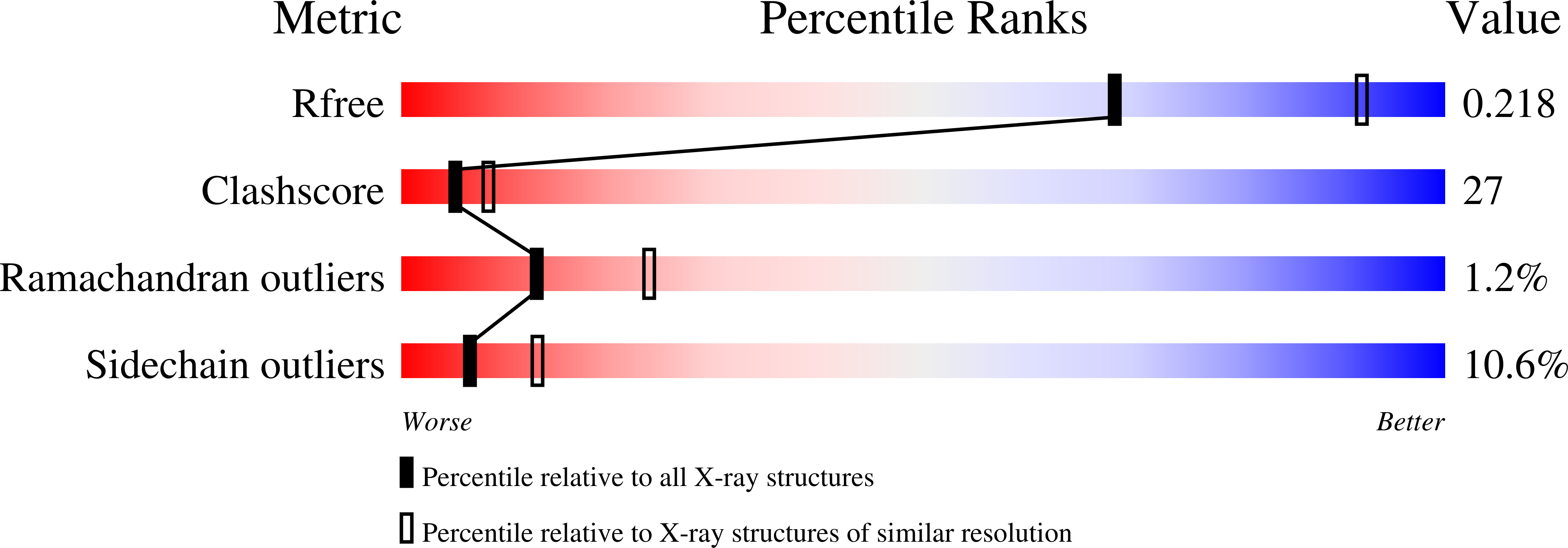The crystal structure of N-acetyl-L-glutamate synthase from Neisseria gonorrhoeae provides insights into mechanisms of catalysis and regulation.
Shi, D., Sagar, V., Jin, Z., Yu, X., Caldovic, L., Morizono, H., Allewell, N.M., Tuchman, M.(2008) J Biol Chem 283: 7176-7184
- PubMed: 18184660
- DOI: https://doi.org/10.1074/jbc.M707678200
- Primary Citation of Related Structures:
2R8V, 2R98, 3B8G - PubMed Abstract:
The crystal structures of N-acetylglutamate synthase (NAGS) in the arginine biosynthetic pathway of Neisseria gonorrhoeae complexed with acetyl-CoA and with CoA plus N-acetylglutamate have been determined at 2.5- and 2.6-A resolution, respectively. The monomer consists of two separately folded domains, an amino acid kinase (AAK) domain and an N-acetyltransferase (NAT) domain connected through a 10-A linker. The monomers assemble into a hexameric ring that consists of a trimer of dimers with 32-point symmetry, inner and outer ring diameters of 20 and 100A, respectively, and a height of 110A(.) Each AAK domain interacts with the cognate domains of two adjacent monomers across two 2-fold symmetry axes and with the NAT domain from a second monomer of the adjacent dimer in the ring. The catalytic sites are located within the NAT domains. Three active site residues, Arg316, Arg425, and Ser427, anchor N-acetylglutamate in a position at the active site to form hydrogen bond interactions to the main chain nitrogen atoms of Cys356 and Leu314, and hydrophobic interactions to the side chains of Leu313 and Leu314. The mode of binding of acetyl-CoA and CoA is similar to other NAT family proteins. The AAK domain, although catalytically inactive, appears to bind arginine. This is the first reported crystal structure of any NAGS, and it provides insights into the catalytic function and arginine regulation of NAGS enzymes.
Organizational Affiliation:
Children's Research Institute, Children's National Medical Center, The George Washington University, Washington, DC 20010, USA. dshi@cnmcresearch.org















